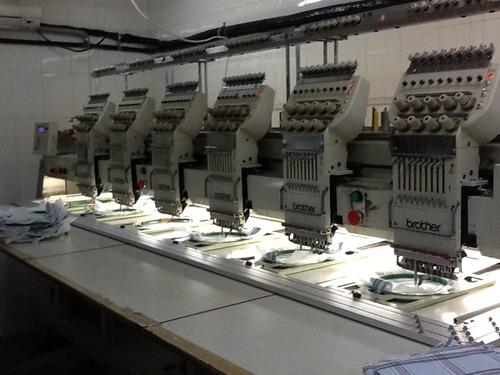Machine Embroidery vs. Hand Embroidery: A Comparative Analysis
Embroidery is a timeless craft that has adorned textiles for centuries. While the essence of embroidery remains the same, the methods have evolved dramatically. Today, we explore the age-old art of hand embroidery and its contemporary counterpart, machine embroidery, in a comparative analysis. This blog post will shed light on the distinctions, advantages, and artistic nuances that define these two embroidery techniques.
The Human Touch vs. Mechanical Precision
Hand Embroidery: Hand embroidery, as the name suggests, is a craft that relies on the dexterity and artistic sensibility of human hands. It's a meticulous process where every stitch is carefully placed, making it a labor of love. The imperfections and irregularities in hand embroidery are often celebrated as part of the artist's unique touch.
Machine Embroidery: Machine embroidery, on the other hand, is a product of technology. It employs automated stitching machines guided by digital designs. The precision and accuracy of machine embroidery are unmatched. Every stitch is consistent and perfectly aligned, resulting in clean, professional-looking designs.
Time-Consuming Art vs. Efficient Production
Hand Embroidery: The art of hand embroidery is time-consuming. Hours, or even days, may be required to complete a single piece, depending on the complexity of the design. It's a labor-intensive process that demands patience and dedication.
Machine Embroidery: Machine embroidery is all about efficiency. It can produce intricate designs in a fraction of the time it takes for hand embroidery. This efficiency is particularly valuable for businesses and industries where large quantities of embroidered items are required.
Artistic Freedom vs. Replication
Hand Embroidery: Hand embroidery allows for boundless artistic freedom. Embroiderers can create unique, one-of-a-kind designs, experimenting with various stitches, colors, and textures. The personal touch in hand embroidery is what sets it apart.
Machine Embroidery: Machine embroidery, while precise, is often perceived as less personal. It excels at replicating designs but may lack the individuality and character that come with hand embroidery. However, modern machines are equipped with a wide range of options, allowing for some customization.
Complexity and Intricacy
Hand Embroidery: Hand embroidery is a testament to human skill and artistry. It excels in intricate, highly detailed designs. Many artists choose hand embroidery for its ability to create stunning works of art with a profound level of detail.
Machine Embroidery: Machine embroidery shines when it comes to complexity and uniformity. It can consistently replicate intricate designs with precision, making it ideal for projects that require a high level of detail.
Cost and Accessibility
Hand Embroidery: Hand embroidery is often seen as a luxury due to the time and skill required. It can be expensive, making it less accessible for some individuals and businesses.
Machine Embroidery: Machine embroidery is more cost-effective, and the accessibility of the technology has made it the preferred choice for businesses, personal projects, and industries that require large-scale production.
The Artisan's Mark vs. Commercial Applications
Hand Embroidery: Hand embroidery is celebrated for the artisan's mark it carries. It's often used for high-end, bespoke items, art pieces, and cultural heritage preservation.
Machine Embroidery: Machine embroidery is widely adopted in commercial applications, such as fashion, home decor, branding, and mass production of customized products. It is the go-to choice for businesses that prioritize efficiency and uniformity.
Conclusion
In the debate between machine embroideryand hand embroidery, there's no clear winner. Each technique has its unique strengths and applications. Hand embroidery embodies the artisan's touch, creativity, and tradition, while machine embroidery brings efficiency, precision, and mass production capabilities to the table.
Ultimately, the choice between the two
techniques depends on the project's goals, budget, and desired aesthetic. In
some cases, the two methods can complement each other, with hand embroidery
used for artistic expression and machine embroidery for efficient production.
The beauty of embroidery, in all its forms, lies in the fact that it continues
to evolve and adapt to the needs of artists, designers, and businesses alike.
Whether crafted by hand or by machine, the art of embroidery remains an
enduring testament to human creativity and the desire to adorn textiles with
beauty and meaning.



